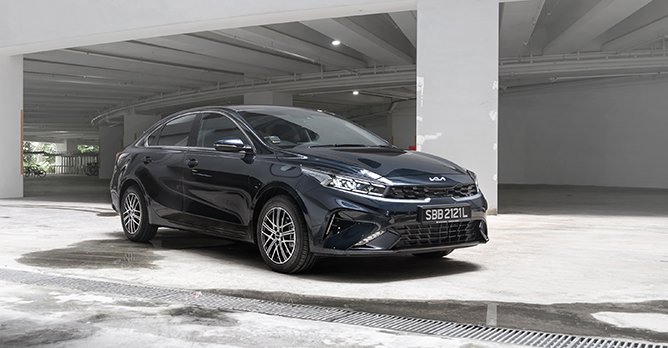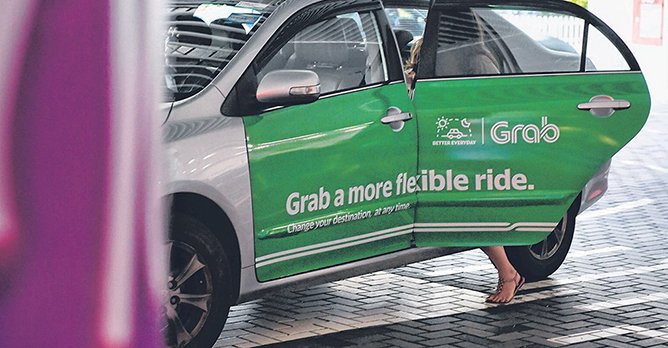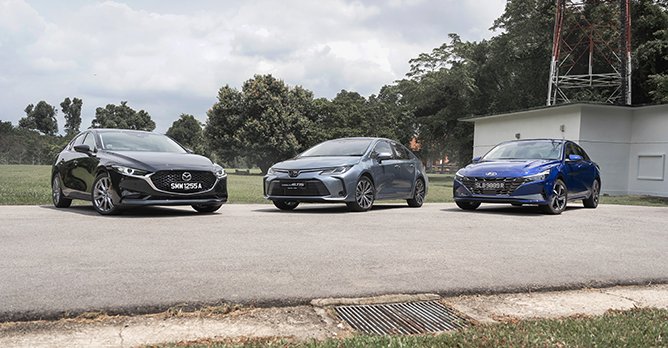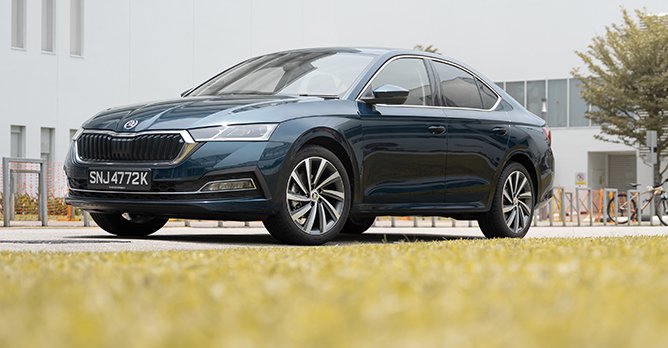Why is Cat A continuing to climb? A deep dive into the consistent climb of Cat A prices
12 Apr 2023|36,996 views
Cat A prices have hit an all time high. Again. You've heard it before, and there's every chance that you're going to hear it again two weeks from now. And maybe two weeks after that. Mmhmm, keep going…
But, why?
Conceptually, Cat A COEs are supposed to be for smaller, mass market cars, and help draw a delineating line between mass and premium models. And typically, we also expect Cat A premiums to be relatively lower (at least compared to Cat B).
Today, the latter is still true (though prices are eye-watering across the board). But what about the former?
With market conditions where they are, it's worth casting a closer eye at what exactly is happening with Cat A premiums. Is this simply a case of excess demand over supply? Or is there a little bit more going on?
The 10-year cycle
When it comes to COE prices, there is something we colloquially term the 10-year cycle. The thinking here is that with COEs having a 10-year lifespan, each 10-year interval should reflect a similar sort of demand (assuming every driver with an existing COE re-ups for another after 10 years).
If we cast our memories back to 2013, Cat A premiums briefly clipped the 90k mark, before 'settling' around the 70k mark. Across the board, that's high - indicating high demand contrasted against low quota. 10 years on, we're seeing the same effect at play - there is an expectation that Cat A premiums will be high.
And, as we've previously covered, this is now further exacerbated by the influx of commercial fleets catering to private-hire drivers.
The premium conundrum
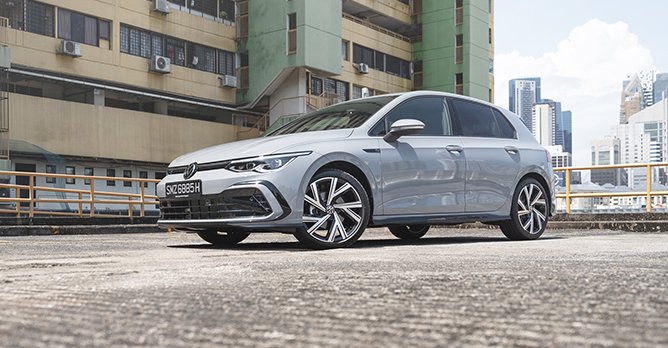
 The Mk8 Golf was originally launched with a Cat B-rated 1.5-litre engine, but has just been updated to slot it down into Cat A Of course, COE premiums are affected by a range of factors, some more opaque than others. There is, however, one more important factor to take into account.
The Mk8 Golf was originally launched with a Cat B-rated 1.5-litre engine, but has just been updated to slot it down into Cat A Of course, COE premiums are affected by a range of factors, some more opaque than others. There is, however, one more important factor to take into account.
In recent years, we're starting to see many more Cat A variants of 'traditionally' Cat B models being introduced by 'premium' distributors, the obvious ones being the Big 3 German brands of Audi, BMW and Mercedes-Benz.
But it's not limited to just these three brands - brands that straddle the mass-market/premium line have also moved towards downsized engines.
Volkswagen just recently announced the introduction of a downtuned 1.5-litre Golf that moves the model from Cat B to A. Peugeot too, across the board, has adopted 1.2-litre engines that slot its models into Cat A (compared to the Cat B 1.6-litre engines of before).
Here is a breakdown of all the Cat A models now being offered across a range of automotive brands:
The idea, from a distributor, is obvious. With Cat B premiums being outlandishly high, having a Cat A variant would be cheaper, and thus more attractive to buyers. At the end of the day, it is a sales and numbers game for these distributors - they just need to move product (and make money).
This trend, if we should call it that, does not happen in isolation. It happens against the existing backdrop of 'traditional' Cat A models from the like of Honda, Hyundai, Kia, Toyota and etc. These are the cars that we traditionally think of as being Cat A models, catering to the masses at a more accessible and affordable price point.
The consequent result is that there is then an influx of new Cat A models, which further squeeze an already congested market segment.
What's next?
This trend is likely not going away. As distributors feel the squeeze to move inventory and shore up bottom lines, this inflated Cat A segment looks like it'll become our new reality rather than a temporary blip.
This potentially creates a bit of a chicken-and-egg problem - high Cat B prices pushes brands to introduce Cat A offerings, which in turn drive Cat A prices up. And this of course has a knock-on effect on the rest of the car market, including (and especially) used cars.
That's just bad news all around for car buyers, but especially those trying to shop at the more affordable end of the price spectrum.
Will premiums continue to hover close to the 100k mark? Perhaps not. If we go by the 10-year cycle, there's an expectation that premiums will eventually come down in the next few years.

 The availability of premium-badged Cat A models will continue to place upward pressure on Cat A prices However, for things to change meaningfully, more direct changes need to be effected by the authorities. After all, brands and distributors have to, and will, operate within this specific set of conditions dictated by the market. To expect anything else is wishful thinking (and contrary to some basic tenets of economics).
The availability of premium-badged Cat A models will continue to place upward pressure on Cat A prices However, for things to change meaningfully, more direct changes need to be effected by the authorities. After all, brands and distributors have to, and will, operate within this specific set of conditions dictated by the market. To expect anything else is wishful thinking (and contrary to some basic tenets of economics).
But there's no shying away from it - with so many more Cat A models now available, the demand within the Cat A segment of the market will likely continue to be high, especially if there continue to be more desirably-badged options among them.
But, why?
Conceptually, Cat A COEs are supposed to be for smaller, mass market cars, and help draw a delineating line between mass and premium models. And typically, we also expect Cat A premiums to be relatively lower (at least compared to Cat B).
Today, the latter is still true (though prices are eye-watering across the board). But what about the former?
With market conditions where they are, it's worth casting a closer eye at what exactly is happening with Cat A premiums. Is this simply a case of excess demand over supply? Or is there a little bit more going on?
The 10-year cycle
When it comes to COE prices, there is something we colloquially term the 10-year cycle. The thinking here is that with COEs having a 10-year lifespan, each 10-year interval should reflect a similar sort of demand (assuming every driver with an existing COE re-ups for another after 10 years).
If we cast our memories back to 2013, Cat A premiums briefly clipped the 90k mark, before 'settling' around the 70k mark. Across the board, that's high - indicating high demand contrasted against low quota. 10 years on, we're seeing the same effect at play - there is an expectation that Cat A premiums will be high.
And, as we've previously covered, this is now further exacerbated by the influx of commercial fleets catering to private-hire drivers.
The premium conundrum

In recent years, we're starting to see many more Cat A variants of 'traditionally' Cat B models being introduced by 'premium' distributors, the obvious ones being the Big 3 German brands of Audi, BMW and Mercedes-Benz.
But it's not limited to just these three brands - brands that straddle the mass-market/premium line have also moved towards downsized engines.
Volkswagen just recently announced the introduction of a downtuned 1.5-litre Golf that moves the model from Cat B to A. Peugeot too, across the board, has adopted 1.2-litre engines that slot its models into Cat A (compared to the Cat B 1.6-litre engines of before).
Here is a breakdown of all the Cat A models now being offered across a range of automotive brands:
| Audi | BMW | Mercedes-Benz | SEAT | Skoda | Volkswagen |
| A3 1.0 | 1 Series 116i | A-Class A180 | Ibiza 1.0 | Scala 1.0 | Polo 1.0 |
| 2 Series Gran Coupe 216i | CLA-Class CLA180 | Arona 1.0 | Octavia 1.0 | Golf 1.5 | |
| 2 Series Active Tourer 216i | GLA-Class GLA180 | T-Cross 1.0 | |||
| X1 sDrive16i | GLB-Class GLB180 | ||||
| B-Class B180 |
The idea, from a distributor, is obvious. With Cat B premiums being outlandishly high, having a Cat A variant would be cheaper, and thus more attractive to buyers. At the end of the day, it is a sales and numbers game for these distributors - they just need to move product (and make money).
This trend, if we should call it that, does not happen in isolation. It happens against the existing backdrop of 'traditional' Cat A models from the like of Honda, Hyundai, Kia, Toyota and etc. These are the cars that we traditionally think of as being Cat A models, catering to the masses at a more accessible and affordable price point.
The consequent result is that there is then an influx of new Cat A models, which further squeeze an already congested market segment.
What's next?
This trend is likely not going away. As distributors feel the squeeze to move inventory and shore up bottom lines, this inflated Cat A segment looks like it'll become our new reality rather than a temporary blip.
This potentially creates a bit of a chicken-and-egg problem - high Cat B prices pushes brands to introduce Cat A offerings, which in turn drive Cat A prices up. And this of course has a knock-on effect on the rest of the car market, including (and especially) used cars.
That's just bad news all around for car buyers, but especially those trying to shop at the more affordable end of the price spectrum.
Will premiums continue to hover close to the 100k mark? Perhaps not. If we go by the 10-year cycle, there's an expectation that premiums will eventually come down in the next few years.

But there's no shying away from it - with so many more Cat A models now available, the demand within the Cat A segment of the market will likely continue to be high, especially if there continue to be more desirably-badged options among them.
Cat A prices have hit an all time high. Again. You've heard it before, and there's every chance that you're going to hear it again two weeks from now. And maybe two weeks after that. Mmhmm, keep going…
But, why?
Conceptually, Cat A COEs are supposed to be for smaller, mass market cars, and help draw a delineating line between mass and premium models. And typically, we also expect Cat A premiums to be relatively lower (at least compared to Cat B).
Today, the latter is still true (though prices are eye-watering across the board). But what about the former?
With market conditions where they are, it's worth casting a closer eye at what exactly is happening with Cat A premiums. Is this simply a case of excess demand over supply? Or is there a little bit more going on?
The 10-year cycle
When it comes to COE prices, there is something we colloquially term the 10-year cycle. The thinking here is that with COEs having a 10-year lifespan, each 10-year interval should reflect a similar sort of demand (assuming every driver with an existing COE re-ups for another after 10 years).
If we cast our memories back to 2013, Cat A premiums briefly clipped the 90k mark, before 'settling' around the 70k mark. Across the board, that's high - indicating high demand contrasted against low quota. 10 years on, we're seeing the same effect at play - there is an expectation that Cat A premiums will be high.
And, as we've previously covered, this is now further exacerbated by the influx of commercial fleets catering to private-hire drivers.
The premium conundrum

 The Mk8 Golf was originally launched with a Cat B-rated 1.5-litre engine, but has just been updated to slot it down into Cat A Of course, COE premiums are affected by a range of factors, some more opaque than others. There is, however, one more important factor to take into account.
The Mk8 Golf was originally launched with a Cat B-rated 1.5-litre engine, but has just been updated to slot it down into Cat A Of course, COE premiums are affected by a range of factors, some more opaque than others. There is, however, one more important factor to take into account.
In recent years, we're starting to see many more Cat A variants of 'traditionally' Cat B models being introduced by 'premium' distributors, the obvious ones being the Big 3 German brands of Audi, BMW and Mercedes-Benz.
But it's not limited to just these three brands - brands that straddle the mass-market/premium line have also moved towards downsized engines.
Volkswagen just recently announced the introduction of a downtuned 1.5-litre Golf that moves the model from Cat B to A. Peugeot too, across the board, has adopted 1.2-litre engines that slot its models into Cat A (compared to the Cat B 1.6-litre engines of before).
Here is a breakdown of all the Cat A models now being offered across a range of automotive brands:
The idea, from a distributor, is obvious. With Cat B premiums being outlandishly high, having a Cat A variant would be cheaper, and thus more attractive to buyers. At the end of the day, it is a sales and numbers game for these distributors - they just need to move product (and make money).
This trend, if we should call it that, does not happen in isolation. It happens against the existing backdrop of 'traditional' Cat A models from the like of Honda, Hyundai, Kia, Toyota and etc. These are the cars that we traditionally think of as being Cat A models, catering to the masses at a more accessible and affordable price point.
The consequent result is that there is then an influx of new Cat A models, which further squeeze an already congested market segment.
What's next?
This trend is likely not going away. As distributors feel the squeeze to move inventory and shore up bottom lines, this inflated Cat A segment looks like it'll become our new reality rather than a temporary blip.
This potentially creates a bit of a chicken-and-egg problem - high Cat B prices pushes brands to introduce Cat A offerings, which in turn drive Cat A prices up. And this of course has a knock-on effect on the rest of the car market, including (and especially) used cars.
That's just bad news all around for car buyers, but especially those trying to shop at the more affordable end of the price spectrum.
Will premiums continue to hover close to the 100k mark? Perhaps not. If we go by the 10-year cycle, there's an expectation that premiums will eventually come down in the next few years.

 The availability of premium-badged Cat A models will continue to place upward pressure on Cat A prices However, for things to change meaningfully, more direct changes need to be effected by the authorities. After all, brands and distributors have to, and will, operate within this specific set of conditions dictated by the market. To expect anything else is wishful thinking (and contrary to some basic tenets of economics).
The availability of premium-badged Cat A models will continue to place upward pressure on Cat A prices However, for things to change meaningfully, more direct changes need to be effected by the authorities. After all, brands and distributors have to, and will, operate within this specific set of conditions dictated by the market. To expect anything else is wishful thinking (and contrary to some basic tenets of economics).
But there's no shying away from it - with so many more Cat A models now available, the demand within the Cat A segment of the market will likely continue to be high, especially if there continue to be more desirably-badged options among them.
But, why?
Conceptually, Cat A COEs are supposed to be for smaller, mass market cars, and help draw a delineating line between mass and premium models. And typically, we also expect Cat A premiums to be relatively lower (at least compared to Cat B).
Today, the latter is still true (though prices are eye-watering across the board). But what about the former?
With market conditions where they are, it's worth casting a closer eye at what exactly is happening with Cat A premiums. Is this simply a case of excess demand over supply? Or is there a little bit more going on?
The 10-year cycle
When it comes to COE prices, there is something we colloquially term the 10-year cycle. The thinking here is that with COEs having a 10-year lifespan, each 10-year interval should reflect a similar sort of demand (assuming every driver with an existing COE re-ups for another after 10 years).
If we cast our memories back to 2013, Cat A premiums briefly clipped the 90k mark, before 'settling' around the 70k mark. Across the board, that's high - indicating high demand contrasted against low quota. 10 years on, we're seeing the same effect at play - there is an expectation that Cat A premiums will be high.
And, as we've previously covered, this is now further exacerbated by the influx of commercial fleets catering to private-hire drivers.
The premium conundrum

In recent years, we're starting to see many more Cat A variants of 'traditionally' Cat B models being introduced by 'premium' distributors, the obvious ones being the Big 3 German brands of Audi, BMW and Mercedes-Benz.
But it's not limited to just these three brands - brands that straddle the mass-market/premium line have also moved towards downsized engines.
Volkswagen just recently announced the introduction of a downtuned 1.5-litre Golf that moves the model from Cat B to A. Peugeot too, across the board, has adopted 1.2-litre engines that slot its models into Cat A (compared to the Cat B 1.6-litre engines of before).
Here is a breakdown of all the Cat A models now being offered across a range of automotive brands:
| Audi | BMW | Mercedes-Benz | SEAT | Skoda | Volkswagen |
| A3 1.0 | 1 Series 116i | A-Class A180 | Ibiza 1.0 | Scala 1.0 | Polo 1.0 |
| 2 Series Gran Coupe 216i | CLA-Class CLA180 | Arona 1.0 | Octavia 1.0 | Golf 1.5 | |
| 2 Series Active Tourer 216i | GLA-Class GLA180 | T-Cross 1.0 | |||
| X1 sDrive16i | GLB-Class GLB180 | ||||
| B-Class B180 |
This trend, if we should call it that, does not happen in isolation. It happens against the existing backdrop of 'traditional' Cat A models from the like of Honda, Hyundai, Kia, Toyota and etc. These are the cars that we traditionally think of as being Cat A models, catering to the masses at a more accessible and affordable price point.
The consequent result is that there is then an influx of new Cat A models, which further squeeze an already congested market segment.
What's next?
This trend is likely not going away. As distributors feel the squeeze to move inventory and shore up bottom lines, this inflated Cat A segment looks like it'll become our new reality rather than a temporary blip.
This potentially creates a bit of a chicken-and-egg problem - high Cat B prices pushes brands to introduce Cat A offerings, which in turn drive Cat A prices up. And this of course has a knock-on effect on the rest of the car market, including (and especially) used cars.
That's just bad news all around for car buyers, but especially those trying to shop at the more affordable end of the price spectrum.
Will premiums continue to hover close to the 100k mark? Perhaps not. If we go by the 10-year cycle, there's an expectation that premiums will eventually come down in the next few years.

But there's no shying away from it - with so many more Cat A models now available, the demand within the Cat A segment of the market will likely continue to be high, especially if there continue to be more desirably-badged options among them.
Thank You For Your Subscription.









